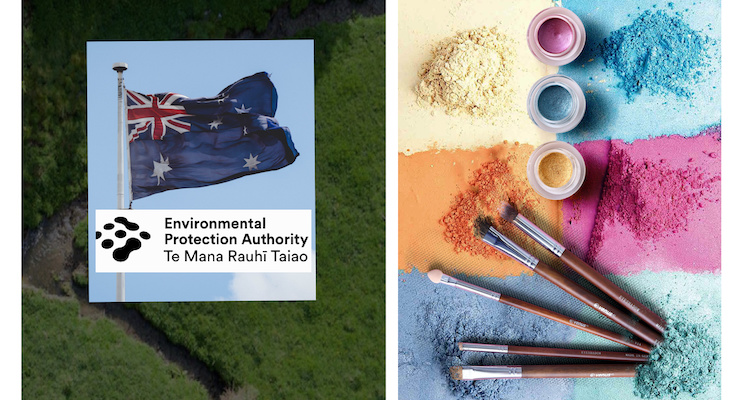02.12.24
New Zealand is set to become one of the first countries to ban “forever chemicals” from cosmetic products.
The country’s Environmental Protection Authority (EPA) will ban perfluoroalkyl and polyfluoroalkyl substances (PFAS) from December 31, 2026. When the ban takes effect in 2027, the country might be the first in the world to take this step.
The cosmetics linked to PFAS have included nail polish, lipstick, foundation, mascara, shaving cream—and more. Whe used in a cosmetic formulation, PFAS can make a product more spreadable, water-resistant, and durable.
PFAS are a class of about 14,000 “forever chemicals” found in all types of products. Since they nearly indestructible, they are often used to make products resistant to water, stains and heat. Research shows that PFAS don't break down in our environment and can build up in the body over time. They have been linked to cancer, infertility and environmental damage.
"We know these chemicals don't easily break down, they can build up in our bodies, and some can be toxic at high levels," said hazardous substances reassessments manager, Dr. Shaun Presow.
Some U.S. states have adopted protection policies regarding PFAS, and the European Union is contemplating a ban.
Professor Allan Blackman at Auckland University of Technology said that no New Zealand cosmetics manufacturers surveyed by the EPA found PFAS in their products—but about 90% of cosmetics are imported.
"International research suggests PFAS are only found in a small number of products, but we take a recautionary approach to potential risks from PFAS," Presow said. "Banning these chemicals in cosmetics is a part of our ongoing response, which includes phasing out all PFAS-firefighting foams and testing for background levels of PFAS in the New Zealand environment."
Read the full details at New Zealand's EPA site.
The country’s Environmental Protection Authority (EPA) will ban perfluoroalkyl and polyfluoroalkyl substances (PFAS) from December 31, 2026. When the ban takes effect in 2027, the country might be the first in the world to take this step.
The cosmetics linked to PFAS have included nail polish, lipstick, foundation, mascara, shaving cream—and more. Whe used in a cosmetic formulation, PFAS can make a product more spreadable, water-resistant, and durable.
PFAS are a class of about 14,000 “forever chemicals” found in all types of products. Since they nearly indestructible, they are often used to make products resistant to water, stains and heat. Research shows that PFAS don't break down in our environment and can build up in the body over time. They have been linked to cancer, infertility and environmental damage.
"We know these chemicals don't easily break down, they can build up in our bodies, and some can be toxic at high levels," said hazardous substances reassessments manager, Dr. Shaun Presow.
Some U.S. states have adopted protection policies regarding PFAS, and the European Union is contemplating a ban.
Professor Allan Blackman at Auckland University of Technology said that no New Zealand cosmetics manufacturers surveyed by the EPA found PFAS in their products—but about 90% of cosmetics are imported.
"International research suggests PFAS are only found in a small number of products, but we take a recautionary approach to potential risks from PFAS," Presow said. "Banning these chemicals in cosmetics is a part of our ongoing response, which includes phasing out all PFAS-firefighting foams and testing for background levels of PFAS in the New Zealand environment."
Read the full details at New Zealand's EPA site.













